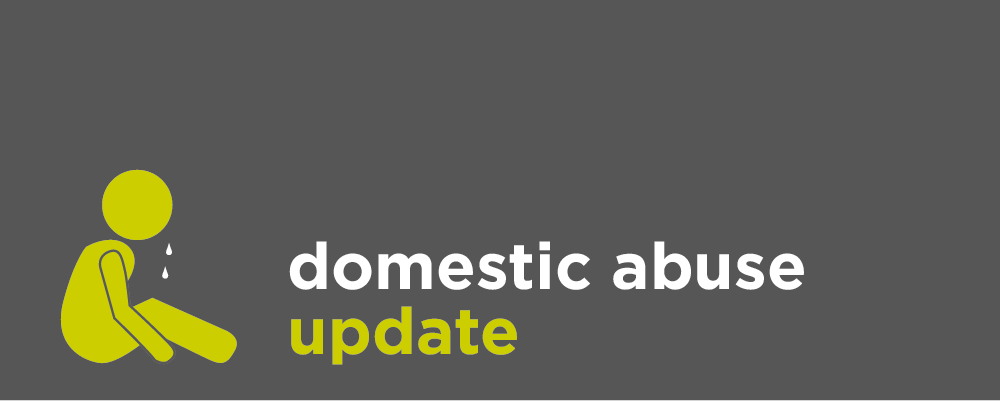- Basildon 01268244144
- Chelmsford 01245453800
- Colchester 01206217300
- London 020 4586 1280

2021 has seen the government continue to make significant changes within the legal landscape involving family law and particularly Domestic Abuse.
To date, domestic abuse has been largely treated in a piecemeal fashion which, at least in part, reflects an increasing awareness of what should be considered domestic abuse. By way of example, rape was legally defined for the first time in 1956 but it was only in 1991 that rape within a marriage was confirmed to be a criminal act.
One significant hole in domestic abuse law until now has been that there has been no legal definition of domestic abuse. The Domestic Abuse Act 2021 changes this and provides us with a legal definition of domestic abuse as follows:-
Behaviour of a person (“A”) towards another person (“B”) is “domestic abuse” if—
(a) A and B are each aged 16 or over and are personally connected to each other, and
(b) the behaviour is abusive.
Behaviour is “abusive” if it consists of any of the following—
(a) physical or sexual abuse;
(b) violent or threatening behaviour;
(c) controlling or coercive behaviour;
(d) economic abuse;
(e) psychological, emotional or other abuse; and it does not matter whether the behaviour consists of a single incident or a course of conduct.
For the purposes of this Act, two people are “personally connected” to each other if any of the following applies—
(a) they are, or have been, married to each other;
(b) they are, or have been, civil partners of each other;
(c) they have agreed to marry one another (whether or not the agreement has been terminated);
(d) they have entered into a civil partnership agreement (whether or not the agreement has been terminated);
(e) they are, or have been, in an intimate personal relationship with each other;
(f) they each have, or there has been a time when they each have had, a parental relationship in relation to the same child;
(g) they are relatives.
The Act also recognises the impact of domestic abuse on children in that “A” will be considered to be abusing “B” even if the abusive behaviour is directed at another person (for example “B”’s child) and recognises children related to “A” or “B” as victims of domestic abuse if they see or hear, or experience the effects of the abuse.
Victims of domestic abuse
The current recourse afforded to victims of domestic abuse is provided through a myriad of different provisions.
This includes normal criminal offences such a murder, assault, rape etc together with a number of more specialised criminal offences such as female genital mutilation (FGM), harassment, malicious communication offences, revenge porn and controlling and coercive behaviour.
Whilst these may offer some deterrence value to protect victims, guilt has to be proven beyond reasonable doubt and specific protection afforded to victims or alleged victims of domestic abuse within the criminal law is limited to bail conditions during the course of an investigation/ prosecution, restraining orders (which can also be made in some cases despite a not guilty verdict), time limited protection available as a result of domestic violence protection notices (48hrs) and domestic violence protection orders ( 14 to 28 days) and warnings given under the Protection from Harassment Act 1997.
Further protection is available through the civil courts with non molestation orders and occupation orders under part IV Family Law Act 1996 to those able to show that they are “associated persons” and civil injunctions under the Protection of Harassment Act 1997 for those unable to show they are connected but are victims of a course of conduct which amounts to harassment.
The Domestic Abuse Act 2021
The new act seeks to consolidate the protective orders which are available and so includes provision for the police to issue new Domestic Abuse Protection Notices which are then to be followed with a hearing within 48 hours (not including Sunday, Xmas Day Good Friday or Bank Holidays.) to consider a Domestic Abuse Protection Order.
The new Domestic Abuse Protection Orders are also something that can be applied for by the alleged victim (and certain others) and can be made by the court without an application having been made by in family proceedings where both “A” and “B” are parties, Criminal proceedings where a “A” has been convicted of an offence and any relevant Civil proceedings where both A and B are parties
About the Domestic Abuse order
Before making a domestic abuse protection order the court will have to be satisfied that on the balance of probabilities that “A” has been abusive towards a person aged 16 or over to whom “A” is personally connected AND that the order is necessary and proportionate to protect that person from domestic abuse, or the risk of domestic abuse, carried out by “A”.
It does not matter—
(a) whether the abusive behaviour referred to took place in England and Wales or elsewhere, or
(b)whether it took place before or after the coming into force of the Act.
Before making a domestic abuse protection order the court will have to, among other things, consider the following—
(a)the welfare of any person under the age of 18 whose interests the court considers relevant to the making of the order
(b)any opinion of the person for whose protection the order would be made—
(i) which relates to the making of the order, and
(ii) of which the court is made aware;
C. in a case where the order includes provision relating to premises lived in by the person for whose protection the order would be made, any opinion of a relevant occupant—
(i) which relates to the making of the order, and
(ii) of which the court is made aware.
Making a Domestic Abuse Protection Order
When making a Domestic Abuse Protection Order, a court may impose any requirements that the court considers necessary to protect the person for whose protection the order is made from domestic abuse or the risk of domestic abuse.
This might include prohibiting A from contacting B, not coming within a specified distance of B’s place of residence or any other specified premises (eg. place of work) and can also be used to prohibit A from evicting or excluding B from premises in England and Wales and to exclude A from the premises. The order can also require A to submit to electronic monitoring.
When these orders are made, it also triggers other requirements such as for A to have to attend a police station and submit to photographs and fingerprints being taken. Breach of the order or the additional requirements are to be a criminal offence punishable by up to 5 years in prison and/or a fine. Breach can also be considered contempt of court.
Changes within the The Domestic Abuse Act 2021
Another big change set out in the act is an extension to the bar on the alleged perpetrator of domestic abuse cross examining the victim themselves and visa-versa within proceedings. The ban will apply to criminal, family and civil proceedings and the act sets out how the evidence is to be dealt with in those situations to ensure fairness. The act also formally recognises the impact that domestic abuse can have on the quality of evidence provided and provides the court with assumptions that are to be made in relevant cases.
In addition to the above changes, the act has also made a few changes to existing laws so that threats to disclose intimate pictures with intent to cause distress is now also considered an offence in addition to actual disclosure of those images and there is a new Strangulation or suffocation offence. It has also extended the circumstances where an act committed outside of the UK may be considered an offence within the UK. The Act also imposes additional housing obligations on Local Authority to victims of domestic abuse and introduces a prohibition on charges being levied for medical evidence of domestic abuse.
It is important to appreciate that whilst this Act has been passed, not all of the provisions are yet in force. This is because it takes some time for the appropriate processes to be put in place. It is expected that most of the provisions in the act will come into force during 2021/22 and the Government has indicated that the new Domestic Abuse Protection Notice and Domestic Abuse Protection Order will be piloted before being implemented throughout England and Wales.
For anyone experiencing domestic abuse or who is being accused of domestic abuse, these are issues which cause a significant amount of anxiety and distress. At Birkett Long LLP our solicitors are experienced in dealing with cases involving allegations of domestic abuse and able to offer sensitive, constructive, and practical advice and representation.
If you require any more information on this topic please contact Karen Johnson via Karen.Johnson@birkettlong.co.uk or 01206 217305.



Comments